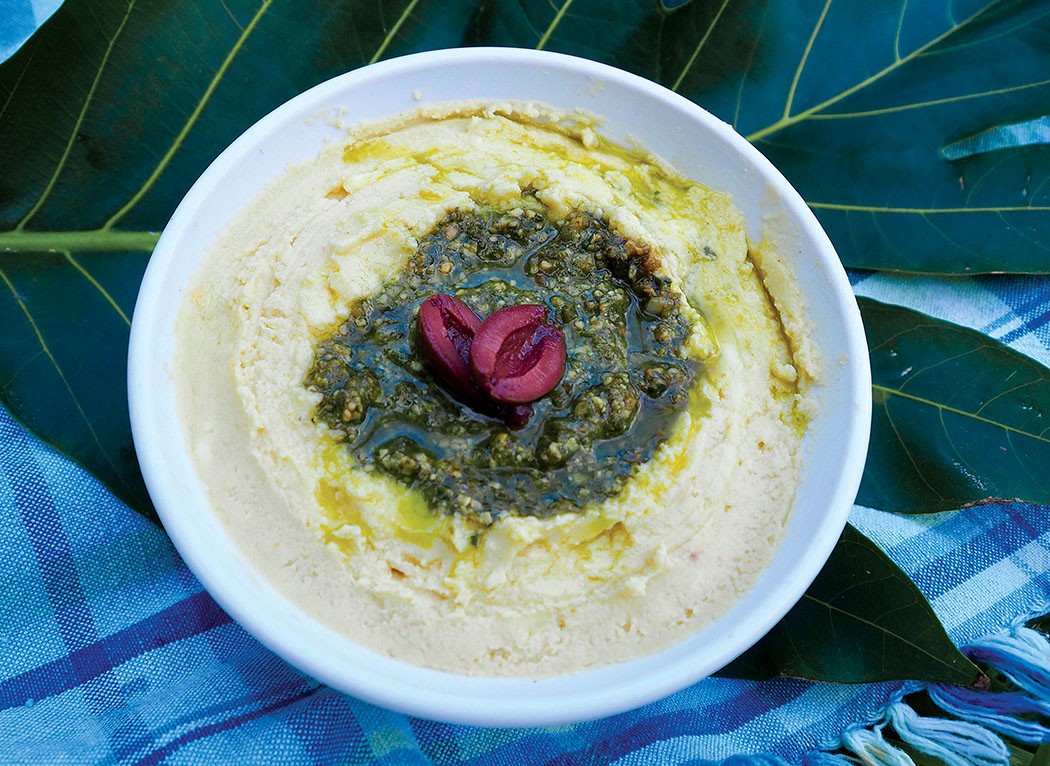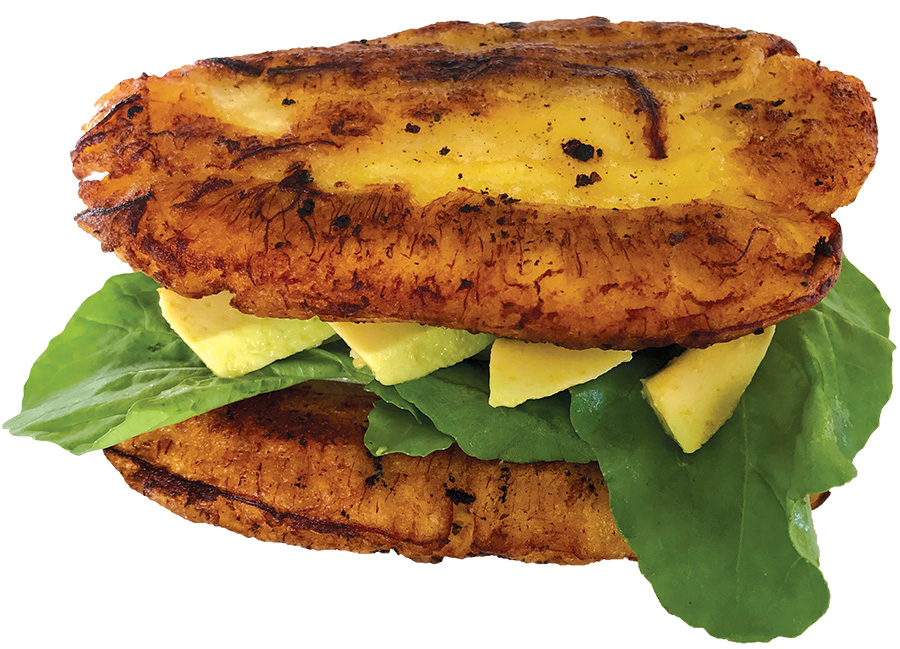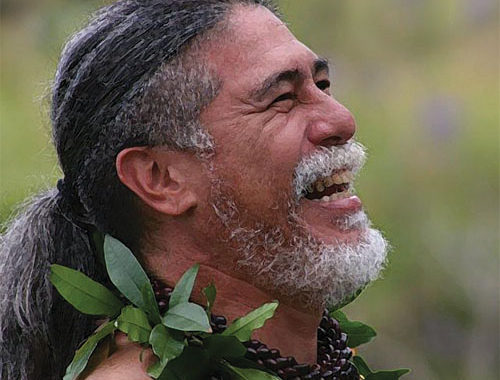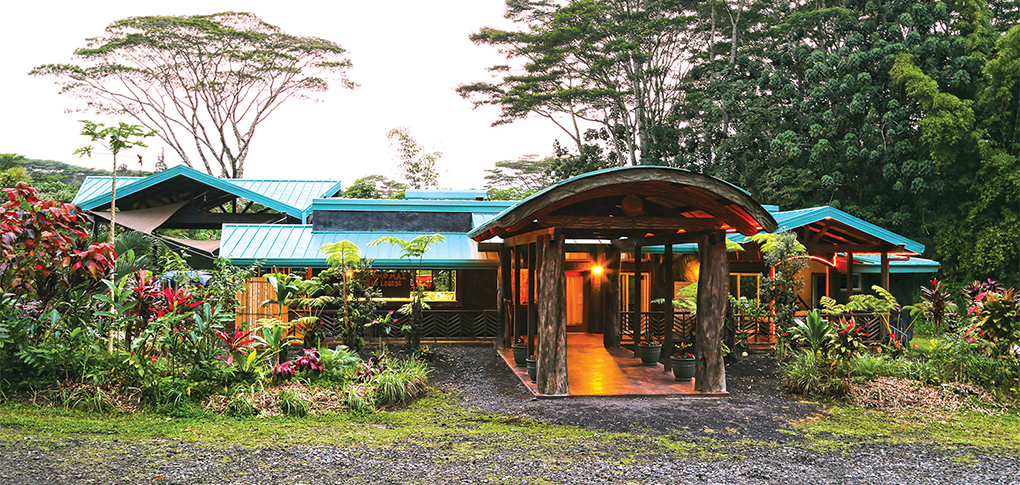
Sustainable Living and Learning at Hawaiian Sanctuary
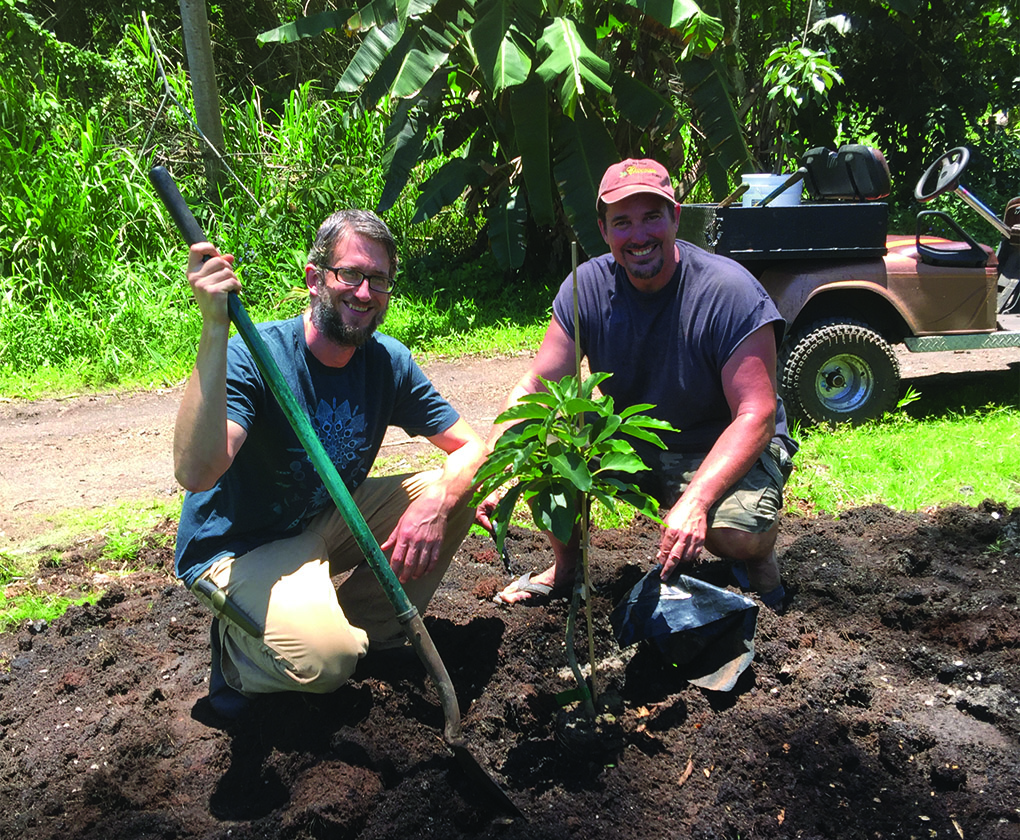
By Brittany P. Anderson
Along the densely forested stretch of Pahoa–Kalapana Road, towering albizia reach into the sky. In their lacey shade sits the Hawaiian Sanctuary, a 44-acre haven tucked away from the busy thoroughfare. There is no large gate to pass through—its grounds are accessible near mile marker 12 distinguished by a small hand-painted sign off the road, and a winding path extending mauka (inland), deeper into the forest. The trail meanders past a patch of coffee trees intermixed with bananas and a young jackfruit tree bearing fruit.
Pu‘uhonua is a place of refuge, a sanctuary of unquestioned forgiveness where a person, no matter the crime, was absolved without revenge or punishment. When a person left the pu‘uhonua they started out fresh, healed, and ready to begin again. Hawaiian Sanctuary founder Steve Lund drew inspiration from the pu‘uhonua. He developed a space for individuals to come in, learn, and go back into the community a better person.
Classes at the sanctuary are dedicated to providing experiential education in permaculture, leadership, sustainability, and personal and collective growth. The Hawaiian Sanctuary, a Federal Educational 501c3 nonprofit, is part farm, part educational hub, and part eco lodge. Each portion supports the other and the community at large.
For 10 years, Hawaiian Sanctuary has hosted permaculture classes, but only recently (in 2016) did they receive grant funding to offer classes free of charge. Steve and longtime edible landscape designer and educator Wade Bauer have seen attendance swell to a near consistent 60–70 residents who travel from up and down the east side of the island each Thursday to attend the 9am class.
As the group assembles in the freshly cleared parking area, they smile and offer to unload a station wagon brimming with plant starts. The Thursday permaculture class at Hawaiian Sanctuary is more than a coming together to learn, it is a time to connect with others, which starts well before the class convenes.
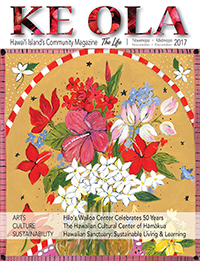
The free education series, Plant Aloha, is supported in part by the County of Hawai‘i, Research and Development, and funding pledged by former county councilmen Greggor Ilagan and Danny Paleka. Grant funding has allowed the Aloha Plant series to reach more people, which Steve and Wade hope translates into more local food being grown on island and in turn generating income for residents.
The 62-part series focuses on teaching residents how to grow their own food at home to provide a fresh organic balanced diet. Wade, as well as guest lecturers, cover propagation, cultivation, harvest, preservation, and use of Hawai‘i adapted crops. The list of guest lecturers for the course is a veritable who’s who of the Hawai‘i Island farming community—“Ginger” John Caverly, Eric “Drake” Weinert, and Jen Rasmussen are just a few of the notable names on the roster.
“For some people, they have moved to Hawai‘i Island and have acreage for the first time. When they hear 90% of their food is shipped in they want to change that.” Wade remarks.
Hawai‘i Island, with its abundance of open space, natural resources, and motivated residents, is the perfect backdrop for Hawaiian Sanctuary. Through the thoughtfully crafted Plant Aloha series, coordinated by Michele David, citizens form support networks, exchanging ideas. They share a similar goal—a more sustainable life.
Each class encourages sustainable farming practices in alignment with Native Hawaiian cultural protocols, permaculture, as well as Korean Natural Farming methods. It also keeps in mind the State’s Aloha+ Challenge goal to double local food production by 2030. With Hawai‘i being the most isolated island chain in the world, developing sustainable agricultural systems is crucial.
The Plant Aloha class is held along the side of the lodge in the open-air meeting space. Each class begins with upcoming farm centric community events and seminars. Students take notes feverishly—a community lū‘au on a farm, fire ant talk, sustainable poultry seminar, the list expands.
Wade facilitates an interactive discussion during class. Many students answer each other’s questions and share resources. Each class takes its own shape through audience participation. During class, the smell of roasting cacao floats through the air as a flock of guinea hens scuttle by, just past the last row of students.

Afterwards, Wade’s lecture participants migrate to the hands-on portion of the series. The orchards and vegetable gardens at the Hawaiian Sanctuary are planted through experiential learning. Putting into practice the skills learned through the lecture, students enhance their education. Hawaiian Sanctuary has hosted approximately 60 different educators in the past 10 years. The classes have participated in the development of an apiary, the planting of 240 cacao trees, various fruit trees, and the kitchen garden. Sustainable organic farming is part of the core beliefs of Hawaiian Sanctuary, and puts into practice what is taught.
As the Plant Aloha class winds down, the kitchen interns busy themselves making lunch and cleaning. Hawaiian Sanctuary offers a unique internship program that focuses on experiential education in various positions throughout the sanctuary. Interns embrace the cooperative community by supporting the daily activities through their education, service, and passion.
“A lot of people coming to us don’t know what it is to live in a community, so we give training in non-violent communication as soon as interns arrive.” Steve explains, “We have an ‘ohana circle where they air their grievances or get things out into the open.”
Interns come from all over the world to learn permaculture, hospitality, yoga, and farm-to-table culinary skills throughout the year. Interns and staff gather to eat lunch, sitting family style. They talk about their day in the covered dining area off the kitchen.
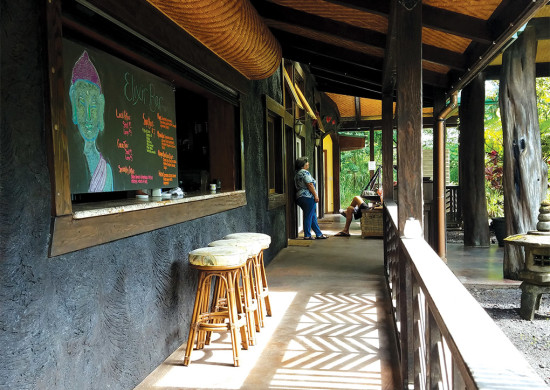
Nearby, a flock of chickens peck at the ground under a large ‘ulu (breadfruit) tree. “We used to have ground dwelling birds on Hawai‘i Island because there were no predators,” Steve explains, “but now there are mongoose and other predators that have decimated the ground dwelling bird population.” Steve has started his own ground dwelling bird sanctuary with a gaggle of rather large geese, chickens, a flamboyant peacock, several peahens, guinea fowl, an array of ducks, and a couple of strutting turkeys.
The Hawai‘i Farmers Union United (HFUU) Puna Chapter meets at Hawaiian Sanctuary on the first Thursday of each month. With Steve Lund as President, Michele David as Secretary, and Vice-President Wade Bauer, the Puna chapter is the fastest growing HFUU chapter in the state. The main goal of the HFUU Puna chapter is to build support within the community, increase and enhance educational opportunities for local farmers and homesteaders, and promote local food hubs to better feed the people of Hawai‘i.
“We can say to legislators—look, I represent all these farmers in Puna,” Steve says, “there’s more power in numbers.” Steve Lund and Hawaiian Sanctuary have become pillars in the community advocating for an area that is often times overlooked.
Steve’s first experience in Hawai‘i was at age 12 when he spent a month touring the island in a camper with his family. Back again during his 20s, he arrived just as the 1986 lava flow was claiming Kalapana, engulfing the burgeoning seaside community.
The beauty he remembered from his childhood was replaced by sights of poverty and untapped potential in the land. Here he saw the opportunity to give back. Steve had been financially successful working in real estate in California but wanted to do more with his life.
“I wanted to develop education that helped with agricultural wealth in the area.” At that time, Steve had no formal agricultural education. He began inviting educators to the 44-acre parcel to teach interns, along with himself, how to grow the food they needed to eat. Because of that, the Hawaiian Sanctuary permaculture class was born.
Past the kitchen, a yoga session comes to an end. The long greenhouse-turned-studio is home to a range of yoga classes throughout the day and Friday nights turns into a dance hall. Every Friday night Hawaiian Sanctuary has a cacao ceremony dance party complete with guest DJs and laser show.
Tucked away, eco pods dot the landscape where some interns sleep, others are rented out for a true farm-stay experience. The sound of coqui frogs lull guests to sleep as the cacao grows under starry Puna skies.

Back at the lodge, chocolate is being made—cacao ground against marble stones with sugar to create a smooth syrup for Steve’s next batch of bean to bar chocolate. Guests staying at the eco lodge take in the expansive gardens or rejuvenate at the spa. Meanwhile, interns bounce about the property weeding. Plant Aloha participants exchange plant starts—and everything comes together in a serene dance that never feels rushed or forced.
Classes end and students follow the meandering path back towards the highway taking with them newfound knowledge to put into practice. Whether participating in the internship program, eco lodge, or the numerous community events held at Hawaiian Sanctuary everyone is welcomed with an abundance of Aloha. ❖
For more information about Hawaiian Sanctuary: hawaiiansanctuary.com.
